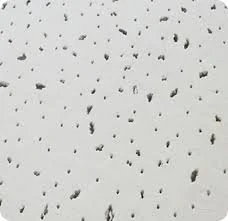Dec . 12, 2024 09:47 Back to list
pvc vs gypsum false ceiling
PVC vs Gypsum False Ceiling A Comprehensive Comparison
When it comes to designing modern interiors, false ceilings play a pivotal role in enhancing aesthetics and functionality. Among the popular options available, PVC (Polyvinyl Chloride) and gypsum have emerged as leading materials for constructing false ceilings. Each offers distinct advantages and disadvantages, making the choice between them a crucial decision for architects, interior designers, and homeowners. In this article, we will explore the differences between PVC and gypsum false ceilings, helping you make an informed choice for your space.
Material Composition
PVC is a synthetic plastic polymer. Its lightweight nature and flexibility make it easy to work with, while its resistance to moisture and mildew adds to its appeal in diverse environments. On the other hand, gypsum, a naturally occurring mineral, is used to create lightweight boards that are typically reinforced with paper. Gypsum ceilings have been a popular choice for many years, known for their durability and fire-resistant properties.
Aesthetic Appeal
When it comes to aesthetics, both materials can be tailored to meet different design needs. PVC panels are available in a plethora of colors, textures, and finishes, including glossy and matte options. They can mimic the appearance of wood, stone, or even metal, allowing for versatile design applications. Gypsum ceilings, while more limited in their finish, can be designed creatively with intricate patterns and can be painted to match any interior theme. The choice often depends on the overall design concept of the space.
Installation Process
The installation process for both PVC and gypsum ceilings differs significantly. PVC ceilings can often be installed quickly due to their lightweight nature and interlocking systems, which allow for straightforward assembly. This quick installation can reduce labor costs and downtime, making it a favorable option for commercial spaces. In contrast, the installation of gypsum ceilings may be more labor-intensive. They often require framing, plastering, and finishing, which can lengthen the installation time and increase costs.
Weight Consideration
pvc vs gypsum false ceiling

Another crucial point to note is the weight of the materials. PVC panels are significantly lighter than gypsum boards, making them easier to handle and resulting in less structural load on buildings. This is particularly beneficial in spaces with existing structural limitations. Gypsum ceilings, while heavier, offer excellent sound insulation and fire resistance, providing important safety benefits that cannot be overlooked.
Maintenance and Durability
When it comes to maintenance, PVC ceilings require minimal upkeep. They are resistant to water, stains, and fading, which makes cleaning a simple task. In contrast, gypsum ceilings may require more attention; they can be susceptible to moisture damage, leading to issues like sagging or mold growth. However, if properly sealed and maintained, gypsum ceilings can last many years. As for durability, PVC’s resistance to moisture gives it an edge in humid environments, whereas gypsum is favored for its fire-resistant qualities.
Cost Analysis
Cost is always a significant consideration in any construction or renovation project. Generally, PVC ceilings are more affordable in terms of material and installation costs. They offer a cost-effective solution for those looking to achieve a stylish look without breaking the bank. Gypsum ceilings tend to be more expensive due to higher material and labor costs associated with their installation. However, the long-term durability and fire resistance of gypsum can justify the initial investment in certain scenarios.
Environmental Impact
In recent years, sustainability has become an important consideration for many consumers. PVC is derived from fossil fuels and can have a greater environmental impact during its production compared to gypsum, which is a natural mineral. Gypsum is also recyclable and more environmentally friendly, further appealing to eco-conscious consumers.
Conclusion
In summary, both PVC and gypsum false ceilings have their unique features, advantages, and disadvantages. The choice between the two largely depends on your specific needs, design preferences, environmental considerations, and budget. For a quick installation with diverse finishes, PVC may be the best option. In contrast, if fire resistance and a more traditional aesthetic are priorities, gypsum could be the way to go. Ultimately, understanding the strengths of each material will guide you in selecting the ceiling that best meets your requirements and complements your interior space.
-
Durable Ceiling T Grid Systems | Easy InstallationNewsAug.29,2025
-
PVC Gypsum Ceiling: Durable, Laminated Tiles for Modern SpacesNewsAug.28,2025
-
Pvc Gypsum Ceiling Is DurableNewsAug.21,2025
-
Mineral Fiber Board Is DurableNewsAug.21,2025
-
Ceiling Tile Clip Reusable DesignNewsAug.21,2025
-
Ceiling T Grid Modular DesignNewsAug.21,2025







